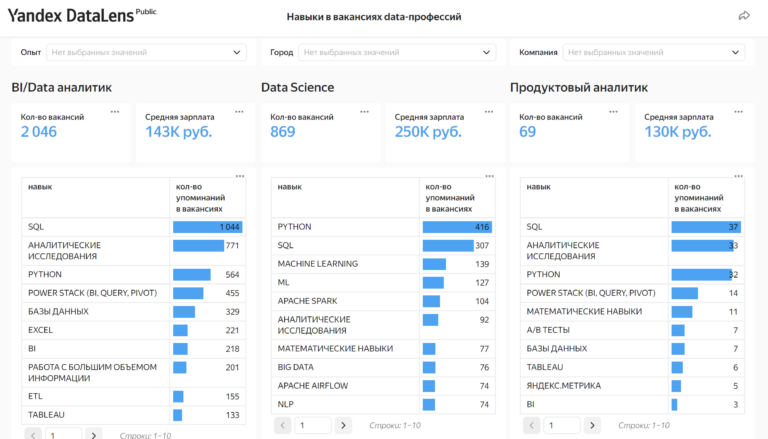What is scientific holography doing now?
Holography in the scientific understanding
Unlike photography, a hologram is a medium on which not only the amplitude, but also the phase of the wave front coming from the object is recorded.
To record a hologram, an object is illuminated at a certain angle. After that, the parameters of the reflected (or transmitted through the object) light wave are recorded on a special medium.
In the middle of the last century, Soviet scientist Yuri Denisyuk proposed recording three-dimensional reflective holograms on a thin light-sensitive material based on silver halide. The proposed process is a two-step process. When an object is illuminated by a laser, a latent image of a diffraction structure is formed on a photographic material, and subsequent processing “reveals” it, making it possible to reconstruct the object wave.

Later, alternative methods of recording on photopolymers were developed, which do not require subsequent development (example). But so far these materials cannot completely replace existing technology, at least because of photosensitivity. This direction is developing, including towards the creation of functional materials on which full-color holograms with high resolution can be written. But at the moment, silver halide is mainly used for imaging holography tasks at ITMO.
At the beginning of the development of this technology, holograms were recorded with exposure times of up to tens of minutes. But the development of pulsed laser light sources has reduced this time to nanoseconds. And in general, the process has long left the walls of the laboratory – holograms can be taken even “in the field” at the site of archaeological excavations.
Compared to photography, holograms have a greater range of capabilities. With their help, you can record and reproduce comprehensive data on the shape of an object with interferometric accuracy – 5-10 * 10^3 lines per mm. In this case, holograms can have quite large physical dimensions. The Museum of Optics at ITMO University houses some of the largest holograms in the world – measuring 1.2 x 0.8 m. There are three such holograms in total – a bust of Pushkin, a bust of Lenin and a hologram with the title “Not for War”. The expert council on behalf of the Polytechnic Museum and the Association for the Promotion of the Development of Scientific and Technical Museums AMNIT officially awarded the hologram of Pushkin’s bust the status “Monument of Science and Technology of Russia.”
Thus, one hologram can have a gigantic information capacity. Moreover, some types of holograms can be stored for decades without any changes, while more traditional storage media – cassettes, floppy disks, hard drives – replace each other every 5-10 years (and storage formats change even more often).

Analogue, digital and computer holography should be distinguished:
Analog holography – “classic”. It covers methods for recording and reading analog holograms from/to physical media. It is worth noting that laser scanning has nothing to do with analog holography. This is another way to obtain detailed information about the surface of a 3D object. It is analog holograms that have the maximum information capacity. The simplest application is “security” holography to detect counterfeits of passport forms, banknotes, and excise taxes on alcohol. Typically, rainbow holograms are used for this, but new methods are also being introduced in this area.
Digital holography works with discrete models and includes analog-to-digital conversion of information: the wavefront from analog scenes is recorded using analog-to-digital detectors. From the point of view of information capacity, digital holograms are inferior to analog ones, but they have their own applications. Now new phase imaging devices are being developed in this direction (to obtain the amplitude and phase of the wavefront). Recording holographic optical elements is popular: instead of creating a lens, its spherical wavefront is recorded on a hologram (a kind of diffraction grating). This allows the wavefront to be reconstructed when the hologram is illuminated. Recording of wave gratings and beam combiners (beam combiners) is also being studied, which can find application in augmented reality glasses.
Computer holography (or synthesized holography in English literature) essentially deals with reverse digital-to-analog conversion. This is a recording of holograms of synthesized models onto analog media. This is one of the directions of modern art – the output of visual holography synthesized on a computer. On the other hand, computer holography is now moving towards creating truly holographic displays (projects like Holobox or “holographic fans” have nothing to do with the truth of holography). This problem is being actively solved in Korea, Japan and a little in China. In parallel, printers are being developed that can print complete data on wavefront characteristics onto physical media.
Even in the scientific literature, concepts are still sometimes confused, especially in terms of computer and digital holography. In 2021, GOST on Optics, Photonics and Holography appeared in Russia (the document is available in three parts: 1, 2, 3), which consolidated the basic definitions. The previous GOST was released back in 1981, so the new document included many new concepts regarding digital holography and analog-to-digital conversion and vice versa. And although GOST does not completely solve the problem of confusion, it is a good step in this direction.
Fine holography
At ITMO’s Laboratory of Digital and Visual Holography we work at the intersection of digital, analog and computer holography.

The laboratory continues the development of Yuri Denisyuk. By the way, it is located in the same Red House on the Kadetskaya Line in St. Petersburg, where Yuri Nikolaevich himself worked for a long time.
Since holograms retain not only the amplitude, but also the phase of the light wave (that is, they actually “remember” the shape of the object), visual holography is used for archival or museum storage, where the shape of the object is valuable. Such holograms can be used for restoration work and solving various archaeological problems. Typically, viewers see only aesthetic meaning in visual holography. However, the problem here is broader. Against the backdrop of the development of optical transistors or new communication protocols, it, of course, seems highly specialized, but this does not make it any less relevant.
The field of visual holography is already about 60 years old. During this time, quite a lot of recorded holograms of various valuable objects have accumulated in the world. For example, in 1982, a large collection of holograms of Scythian gold was recorded from the storerooms of the State Hermitage. Another example is an online gallery of holograms of various museum objects on website Yuri Nikolaevich Denisyuk.
Some of the original objects used to shoot the holograms have already been lost, others may be the subject of legal disputes and therefore are inaccessible to researchers. But holograms can be shot simultaneously, and then reproduced and analyzed without restrictions. Copying allows you to simultaneously demonstrate the same object in different exhibition complexes.
It is clear that a hologram cannot replace real objects of cultural heritage in archaeological, paleontological and other research methods. But this is a good way to save and transfer information about objects when traditional methods are unavailable for some reason (more about this in article). And this is a whole set of approaches for non-destructive monitoring of changes in cultural heritage objects.
Occasionally, specialized exhibitions of visual holograms are organized in different countries, that is, this area is becoming an independent art direction. Several such holograms are exhibited at the ITMO Museum of Optics in St. Petersburg.
Famous hologram galleries:
Digitization of a holographic image
Recorded holograms are of great value because they record much more information than regular photographs or videos. But in order not just to look at them, but to somehow analyze the information, obtain new information about the original object (notice progressive defects, examine objects to which there is no access, and so on), modern processing methods are needed. The analog holographic image must be digitized.
Digitization is the transformation of all or part of the information stored using a visual hologram. For example, digitizing individual angles of an image. To achieve this, various methods are used—reconstruction lighting parameters and methods for recording the resulting object wave are selected so that the maximum amount of data from the original hologram is transferred to the digital format. The restored hologram can be filmed handheld on a smartphone from different angles and obtained a 3D model. Or you can use more specialized approaches.
ITMO’s Laboratory of Digital Visual Holography is working on a photogrammetric digitization method, in which a hologram illuminated at a certain angle is photographed from different angles. Next, using triangulation algorithms, you can construct a set of points – reconstruct a three-dimensional model of an objectshown in the hologram.

The advantage of this method is that widely available, inexpensive equipment can be used. In addition, the method does not impose restrictions on the physical dimensions of the hologram.
The result of digitizing a hologram is a three-dimensional model of an object that can be reproduced using any prototyping technology, even on a 3D printer.
Digital-to-analog conversion
In parallel, the reverse process is developing – digital-to-analog conversion of three-dimensional objects, that is, recording holograms from 3D models. The amount of information stored in such an analog hologram is smaller, since the image initially synthesized on a computer is displayed on the hologram using discrete spatial light modulators.
In this direction, holographic wave printers are being developed that are capable of synthesizing the wave pool and recording it on a medium (this is the area of interest colleagues from Japan). There are also various pseudo-holographic methods, when several different angles of an image are recorded on the medium (the result is not a full-fledged hologram, but a stereogram).
Hologram quality control
A separate area of work – control safety of the hologram during long-term storage and during work with them. We noted above that some types of holograms can store information for a long time. But still not eternity. Color holograms degrade, and this happens faster if the photographic material is intensively illuminated by bright light, that is, the hologram is not just stored in storage, but is shown to the public or regularly used for experiments.
A detailed study of degradation processes is still at an early stage. Some works in this direction, published earlier, describe some approaches to assessing the quality of holograms of test objects, but there is no universal and fairly easily reproducible method yet. ITMO’s Laboratory of Digital Visual Holography is engaged in the development of such methods in relation to color visual holograms. And it is convenient to conduct research at the exhibits of the ITMO Museum of Optics – they are constantly illuminated by broadband light sources.

By the way, there is no data yet on the degradation of monochrome reflection holograms – their structure has not changed over decades of study. The fact is that the recording and chemical post-processing processes of color and monochrome holograms are somewhat different. For people of color, in addition to developing and fixing, a bleaching procedure is often used to make the image brighter. But at the same time as it improves the picture, it causes silver to wash out from the material on which the hologram is recorded. For monochrome holograms, bleaching is used only in individual cases, and therefore has no such effect. Procedures for working with monochrome holograms, on the contrary, ensure the formation of a protective shell of silver. However, it is too early to talk about safety over very long periods of time – not even 100 years have passed since the recording of the first holograms.
In addition to methods for assessing image quality, methods for preserving the diffraction structure are needed. Holograms are quite sensitive to temperature changes, humidity levels in the room and the intensity of radiation used to reconstruct the image. Although a monochrome hologram is recorded at a certain wavelength, it can change its color – the spectrum can shift to the red region or green in the same room in winter, when there is one level of humidity, and in summer – with other indicators. This means that the emulsion layer changes thickness: it swells or, conversely, dries out – and this leads to a change in the refractive index. Methods for monitoring diffraction structure could help determine storage and display requirements for hologram monuments. After all, such documents exist for ordinary, familiar exhibits – sculptures, paintings. And this problem has yet to be solved.
It seems that developments in the field of visual holography are far from the technical mainstream. But the world is gradually moving towards creating truly holographic displays and augmented reality glasses. So far these are isolated and very expensive solutions, but more and more large companies and startups are betting on such developments. Sooner or later they will succeed. And we believe that with the advent of such technology, previously recorded holograms, as well as the processes of their digitization, will become much more in demand.





